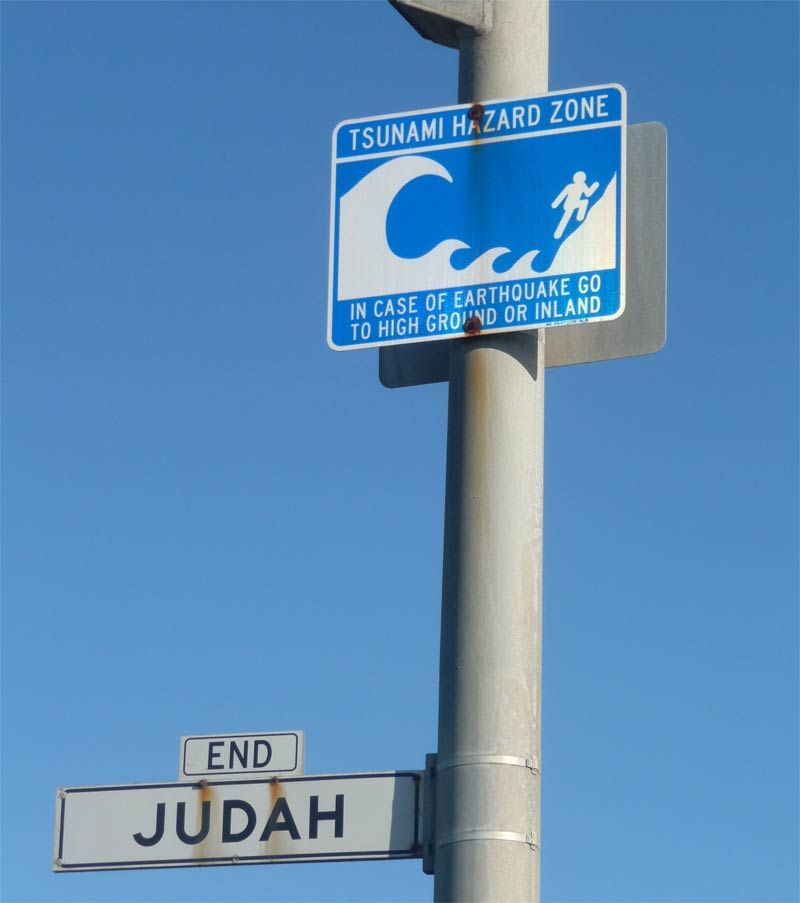Will My Home Be Hit by a Tsunami?

Unless you live in Ohio or one of the other land-locked states, there's always a chance that a tsunami can wash up on your doorstep. Of course, that risk is greater in some places than others. Computer models can predict where tsunamis might make land, but one of the best ways to evaluate the potential for an area is to look at the historical evidence.
The National Geophysical Data Center and US Geological Survey have done an excellent job doing just that. Here is the outlook for regions of the United States, ranked wettest to driest:
Hawaii
Hawaii has a long recorded history of tsunamis, coming from both earthquakes around the Pacific Rim, or "Ring of Fire", termed teletsunamis (which originate in a faraway location), and from earthquakes and landslides near Hawaii, termed local tsunamis. One of the largest and most devastating tsunamis Hawaii has experienced was a teletsunami in 1946 from an earthquake along the Aleutian subduction zone. Runup heights reached a maximum of 33 to 55 feet and 159 people were killed. Local tsunamis have also hit Hawaii, primarily from earthquakes and large-scale subsidence along the south flank of Kiluea. The largest of these were in 1868, which killed 81 people, and in 1975. Overall, some 32 tsunamis with runup greater than 3 feet have occured in Hawaii since 1811.
Alaska
Because Alaska, including the Aleutian Islands, is bordered to the south by a major subduction zone capable of generating large earthquakes, the state has experienced a number of damaging tsunamis. By far, the one that stands out is the tsunami generated from the 1964 magnitude 9.2 earthquake that occurred in the Gulf of Alaska. The earthquake then generated a Pacific-wide tsunami and landslides in the coastal fjords such as Valdez also generated localized, but extremely, damaging waves. Overall, approximately 16 tsunamis of all sources with runup greater than 3 feet have occurred in Alaska since 1853.
Sign up for the Live Science daily newsletter now
Get the world’s most fascinating discoveries delivered straight to your inbox.
U.S. West Coast
Most of the many tsunamis that have hit the U.S. west coast originated from earthquakes around the Pacific Rim. However, scientists have determined that a local tsunami was generated by a magnitude 9 earthquake that rumbled offshore the Pacific Northwest (in the Cascadia subduction zone) on January 26, 1700. Analysis of geologic deposits indicates that a number of earthquakes, possibly of magnitude 8 to magnitude 9, have occurred in the past, indicating that future tsunamis from the Cascadia subduciton zone are possible. Overall, approximately 28 tsunamis with runup greater than 3 feet have occurred along the U.S. West Coast since 1812.
U.S. Gulf Coast
In historic times, the tsunami activity in the Gulf Coast has been minimal: All tsunami waves recorded there have less than 3 feet. There are a couple of early 20th-centutry reports of tsunami waves from Caribbean earthquakes along the Gulf Coast that are difficult to evaluate, but the wave heights all appear to be less than 1 meter.
U.S. East Coast
There are no major subduction zones in the Atlantic Ocean, except for where it borders the Caribbean Sea, so there has been a relatively low frequency of tsunamis there compared to the Pacific Ocean. The most famous Atlantic tsunami is the 1755 Lisbon tsunami, whichwas generated by an earthquake on a fault offshore Portugal. The most noteworthy North America local tsunami is the 1929 magnitude 7.2 Grand Banks earthquake near Newfoundland, Canada, which was probably triggered by a submarine landslide, and generated a 6- to 23-foot runup wave that hit shores as far away as South Carolina. Like the Gulf Coast, there a couple of reports of small tsunamis from Caribbean earthquakes, all less than 3 feet.











